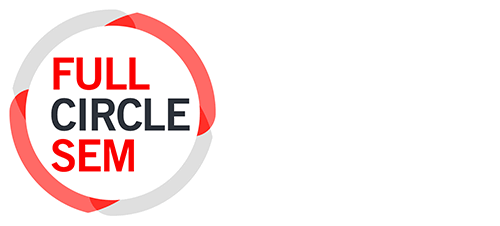Search engine marketing (SEM) tactics prioritize increasing your visibility in search engines to connect with quality leads and effectively turn them into loyal customers. These digital marketing strategies primarily use pay-per-click (PPC) advertising, though they also rely on organic search to drive quality traffic to your website. The question, however, lies in what a user will see once you’ve earned their click. This is when understanding the role of landing pages in SEM is important.
Understanding the role of landing pages in SEM will help you maximize conversions and optimize the user experience. Creating effective landing pages is both an art and a science. Below, you’ll learn how to master the technique to build one that maximizes your conversion rates.

Why Landing Pages in SEM Matter
Unlike a homepage, a landing page is designed with a single focus or goal in mind. Whether it’s to capture leads, sell a product, or promote an event, its focused approach eliminates distractions and guides visitors toward taking the desired action.
An optimized landing page improves your Quality Score in Google Ads, which can lower your cost-per-click (CPC) and improve your ad rankings. Additionally, it ensures that your ad spend is more effective by increasing the likelihood that visitors will convert.
What’s a “Good” Bounce Rate?
Your bounce rate refers to the percentage of site visitors who navigate away from your content after viewing just one page. For instance, say that ten people click on your PPC ad and arrive on your landing page. Half of them click on your sign-up form and provide the requested information. The other half skim through the content and leave the page without doing anything else. Your bounce rate is, therefore, 50%.
As for what counts as a “good” bounce rate, there’s a lot of variability. Bounce rates often vary based on the industry you operate within and the kind of audience you are targeting, among many other factors.
Nevertheless, bounce rates typically fall between 26% to 70%.1 As such, you could say that a “good” bounce rate stays under 40%, but it will still probably be at or above 26%. While getting your bounce rate below the 26% threshold is possible, doing so is challenging, and driving it under 20% is virtually impossible.
With that in mind, set your sights on a bounce rate as close to 26% as possible. Think about it this way: If you achieve a bounce rate of 30%, that means seven out of ten of your landing page visitors are sticking around. Those are pretty good numbers, especially if you are running awareness or lead-gen campaigns.
Elements of a Great Landing Page
Now that you know the importance of landing pages in SEM, let’s shift our attention to a few tips and best practices that will help you boost your conversion rate. Every great landing page needs the following elements:

Concise Calls to Action (CTAs)
Your landing page’s CTA may be its most crucial element. It tells visitors exactly what you want them to do next. As such, your CTA should be prominently displayed and easy to find. Use action-oriented language that creates a sense of urgency, like “Get Started Now” or “Download Today.” Be direct and clear, leaving nothing open to interpretation. You shouldn’t come off as “pushy,” but you also don’t want customers to be confused about what to do next.
A Great Title
Your headline or title is one of the first things people see, so it must catch their collective eye immediately. A worthwhile title should convey the benefit of your product or service. You must ensure it aligns with the ad that brought visitors to your landing page so they don’t feel deceived.
A Logical Structure
The flow of your landing page should be logical and easy to follow. Most landing pages are relatively short, clocking in at around 700 words or less, but you can make your content even snappier. Just make sure to use lots of subheaders so consumers can quickly find the information they are looking for. Additionally, keep in mind that you can use multiple CTA buttons and prompts across a landing page; don’t limit yourself to just one.

Simple Lead Capture Forms
If your landing page includes an information capture form, keep it simple. Only ask for the essential information you need to add someone to your customer relationship management (CRM) platform, such as their name and email address. Using these details, you can follow up with them and nurture them through personalized drip campaigns.
Engaging Visuals
Visual elements like images and videos significantly enhance the effectiveness of a landing page. They help break up text and make the content more visually appealing. As such, you’ll want to use high-quality images relevant to your offer. If you are promoting a product, include pictures of the item in use. If you are selling a complex software solution, consider adding an explainer video to eliminate buyer hesitancy and explain how your technology works.
Mobile Responsiveness
Every great landing page is mobile-friendly, especially given that a majority of web traffic now originates from mobile devices. Ensuring your content is displayed correctly on smartphones can help you reach more consumers and drive down your bounce rate. Test every element of your page, including the lead capture form and visual elements, to ensure they function as they should on mobile devices.

Build Better Landing Pages With Full Circle SEM
Ultimately, the success of your PPC campaign hinges on the quality of your landing pages. You can ensure you are driving prospects to high-quality content with the help of Full Circle SEM. Contact our team today, and let’s chat about your search engine marketing goals.
Source:
[1] https://blog.hubspot.com/marketing/what-is-bounce-rate-fix

